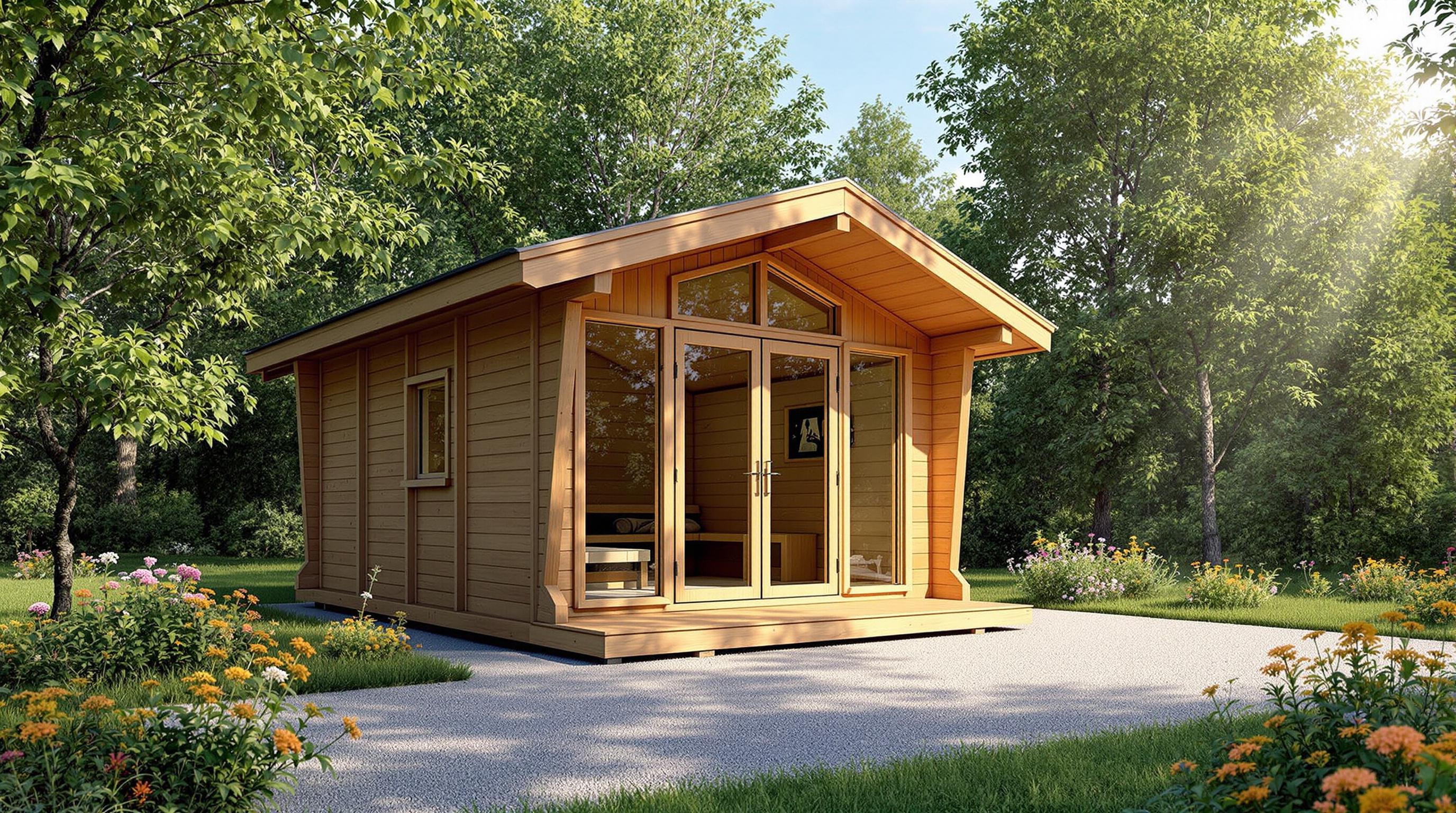Home saunas are great for relaxation, but they often face issues like uneven temperatures, electrical glitches, and maintenance challenges. Ignoring these can lead to safety risks, higher costs, or reduced performance.
Key Problems and Solutions:
- Temperature Issues: Caused by faulty thermostats, poor insulation, or damaged heating elements. Fix by checking thermostats, sealing gaps, or replacing heating components.
- Electrical Problems: Includes tripped breakers, flickering lights, or outdated wiring. Always address these safely by inspecting connections or hiring a professional.
- Maintenance Challenges: Moisture can warp wood, cause mold, or wear surfaces. Prevent with regular cleaning, sealing wood, and ensuring proper ventilation.
Quick Tip: Regular inspections and cleaning can prevent most sauna issues. For serious problems like electrical faults, always consult a professional. Keep your sauna safe, efficient, and enjoyable with routine care.
Common Problems in Home Saunas and Their Causes
Why Saunas Have Temperature Problems
Temperature issues in saunas often arise from faulty thermostats, poor insulation, or broken heating elements. A malfunctioning thermostat can lead to unsafe temperature swings, impacting both comfort and safety.
In traditional saunas, gaps or worn-out insulation allow heat to escape. This not only reduces the sauna's effectiveness but also drives up energy bills. Similarly, damaged heating elements - whether in infrared or traditional saunas - can result in uneven heating or an inability to reach the desired temperature. Fixing these issues is key to maintaining consistent heat and maximizing the sauna's benefits.
However, while mechanical failures are common, electrical problems can pose even greater risks.
Electrical Issues in Saunas
Tripped circuit breakers are a frequent issue, often caused by overloaded systems or loose wiring. Flickering lights, especially in older saunas, typically indicate damaged wiring, which can deteriorate over time due to heat and humidity exposure.
Older electrical setups may struggle to power modern saunas effectively, particularly in homes with outdated panels. These limitations can lead to inconsistent heating and other performance problems.
Electrical concerns aside, regular upkeep is crucial to address wear and tear, especially in moisture-heavy environments.
Maintenance Problems and Wear Over Time
Excess moisture can cause sauna wood to warp or crack, affecting both its appearance and functionality. Poor ventilation can lead to mold and mildew, particularly in steam saunas where humidity levels are high.
Here’s a quick look at common maintenance issues and their causes:
| Issue | Primary Cause | Early Warning Signs |
|---|---|---|
| Wood Warping | High moisture | Visible bending or buckling |
| Mold Growth | Poor ventilation | Musty smell, dark spots |
| Surface Wear | Lack of sealing | Rough texture, visible wear |
| Door Seal Deterioration | Regular use | Gaps, heat loss |
Routine maintenance not only keeps your sauna looking great but also helps avoid expensive repairs and potential health risks.
How to Solve Common Sauna Problems
How to Fix Temperature Problems
If your sauna's temperature isn't consistent, start by checking the thermostat. Make sure it's accurate and adjust it according to the manufacturer's guidelines. If the problem continues, you might need to replace it.
Inspect the sauna's walls, ceiling, and floor for any cracks or gaps that could be letting heat escape. Use heat-resistant caulk to seal these openings, especially around door frames and ventilation ducts. For heating elements, clear away any debris or mineral buildup by cleaning them thoroughly. If you notice visible damage, it's best to call a professional for a replacement.
After resolving heating issues, double-check that your sauna's electrical systems are working safely and efficiently.
How to Address Maintenance Issues
Regular upkeep can prevent many sauna problems. Clean the sauna's wood surfaces weekly with a soft brush and mild soap designed for sauna use. Twice a year, apply treatments like linseed oil to protect the wood.
Use a hygrometer to monitor humidity levels, and make sure intake and exhaust vents are clear to allow proper airflow. Clean vent covers every month to avoid moisture-related problems.
If your sauna has a steam generator, descale it every three months to prevent mineral buildup. If steam output decreases, have a professional inspect the system to ensure everything is working correctly.
Staying on top of maintenance tasks helps keep your sauna running smoothly and prevents small issues from becoming big headaches.
How to Handle Electrical Problems
Always turn off the power at the circuit breaker before inspecting any electrical components. Check for loose connections at the control panel and heating unit, and look for signs of wire damage like discoloration or melted insulation.
If the control panel is acting up, try resetting the power first. Persistent problems might show error codes that can help identify the issue. For more complex issues, such as faulty relays or damaged wiring, hire a professional electrician to safely assess and fix the problem.
Routine maintenance and quick attention to electrical concerns are key to keeping your sauna safe and functional. Scheduling a yearly professional inspection can help catch potential issues before they escalate.
Diagnosing Issues in a Home Infrared Sauna

sbb-itb-3953eb0
Tips for Preventing Sauna Problems
A little care goes a long way in extending your sauna's life and keeping it running smoothly. Follow these steps to maintain its performance and avoid common issues.
Cleaning and Caring for Sauna Wood
Wipe down benches and walls after every session to remove moisture. Use cleansers specifically designed for saunas to protect the wood and preserve its natural look. Regular cleaning not only keeps your sauna hygienic but also prevents long-term damage caused by trapped moisture.
Keeping Sauna Ventilation in Check
Proper ventilation is key to preventing moisture buildup. Make sure intake and exhaust vents are free of dust and debris. After each session, leave the door open and check that air can flow freely through the vents.
Here’s a simple maintenance schedule to help:
| Task | Frequency | Why It Matters |
|---|---|---|
| Clean vent covers | Monthly | Avoids dust accumulation |
| Check exhaust fan | Quarterly | Ensures moisture is removed |
| Inspect door seals | Twice a year | Keeps heat inside efficiently |
Good ventilation prevents many moisture-related problems, saving you from costly repairs.
Inspecting Sauna Equipment Regularly
Take a close look at your heating elements every month. Watch for signs of mineral buildup or corrosion, which can affect performance. Use a separate thermometer to confirm your control panel is showing the correct temperature.
Check electrical connections for any loose wires or discoloration. Strange sounds, smells, or performance issues? Don’t ignore them - fixing small problems early can prevent bigger headaches later.
Conclusion
Managing a sauna effectively means tackling common problems such as uneven temperatures, electrical glitches, and maintenance hurdles with regular care. Keeping a sauna in good shape ensures both safety and durability. Simple tasks like treating the wood and inspecting ventilation can help avoid frequent issues.
When something goes wrong, quick troubleshooting is essential. Start by checking the basics before diving into more complicated fixes. While many problems can be handled on your own, certain repairs - especially those involving safety - should always be left to professionals.
FAQs
Here’s a quick guide to help you troubleshoot common sauna problems effectively.
How to troubleshoot a sauna?
If your sauna isn’t working as it should, follow these steps to identify and resolve the issue:
Troubleshooting Steps
- Check the circuit breaker and look for any loose electrical connections.
- Ensure the thermostat is calibrated correctly and verify that the heating elements are functioning (they should glow red when powered).
- Clear any blocked vents and arrange sauna stones properly.
- Test the ventilation system to make sure it’s operating as intended.
- Inspect the insulation around doors and walls for any gaps or damage.
For Temperature Problems
- Confirm that the thermostat is positioned correctly.
- Check if the ventilation system is running smoothly.
- Look for any issues with insulation seals.
- Assess the heat distribution to ensure it’s even.
When to Call a Professional
For safety, reach out to a qualified technician if you notice:
- Flickering lights.
- A burning smell coming from electrical components.
- Major temperature swings.
- Complete loss of heating.
Quick Maintenance Tips
- Replace any damaged sauna stones as soon as possible.
- Schedule professional inspections every 3 to 6 months.
- Keep a log of any unusual changes in performance.


